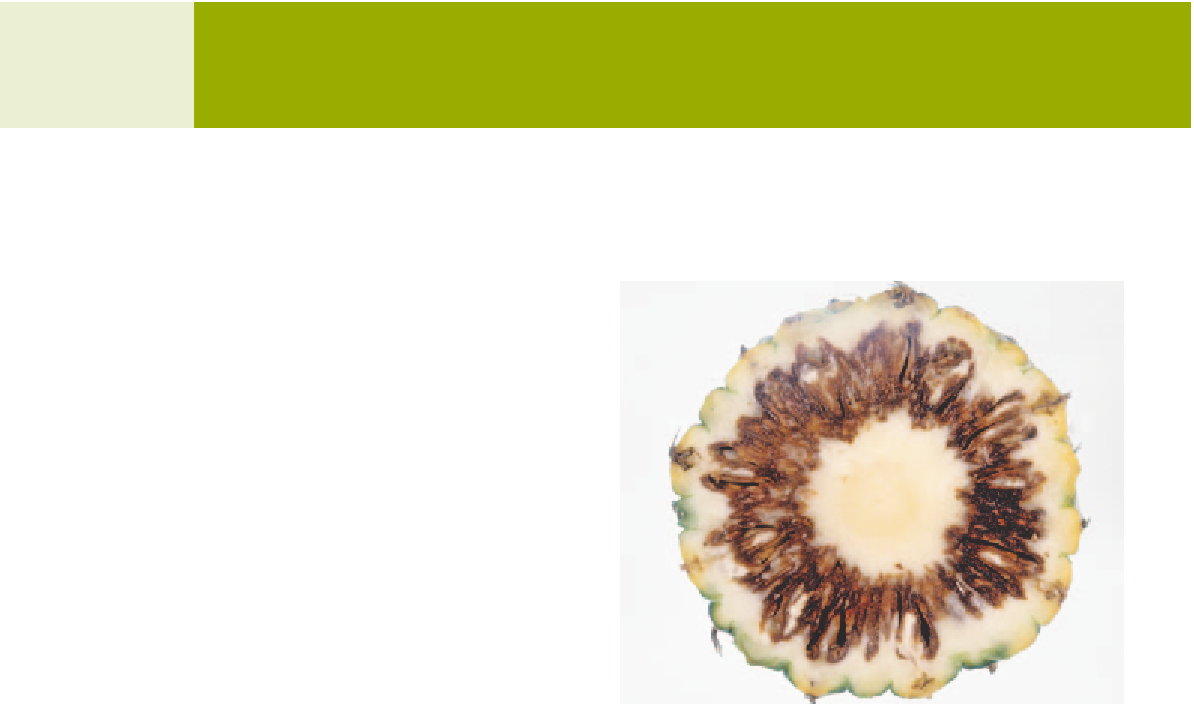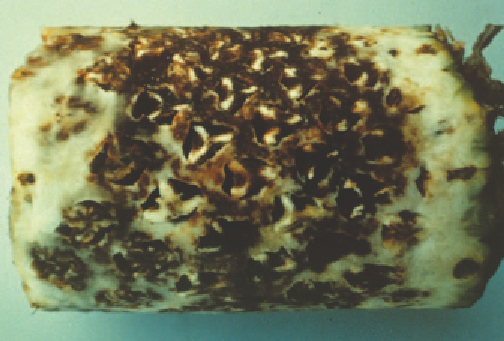Agriculture Reference
In-Depth Information
16
PINEAPPLE
(
Annas comosus
)
T h e p i in e a p p l e o r i g i in a t e d i in S o u t h A m e r i c a , w h e r e
native people selected a seedless mutation from a wild
species. It belongs in the family Bromeliaceae, many
members of which are epiphytes living on trees and
rocks. Pineapples grow in the soil and resemble
epiphytes in that their roots are intolerant of poor soil
aeration. Pineapple roots are adventitious and will not
regenerate if damaged. Major pathogens causing root
damage in Queensland are
Phytophthora cinnamomi
and
nematodes. Mealy bug wilt also affects the root system.
Base rot and water blister are economically significant.
Diseases such as Phytophthora fruit rot, pink disease,
yeasty rot and marbling have little economic effect
because they occur infrequently and have only a minor
effect on yield or fruit quality.
Fig 16.2 Fresh fruit affected by marbling.
BACTERIA AND
PHYTOPLASMAS
Symptoms
Infected fruit do not show any external symptoms.
Internally, the f flesh is red-brown and granular and has
a woody consistency.
MARBLING
■
Cause
The bacterium
Pantoea ananatis.
In Hawaii, the bacteria
Acetobacter
spp. also cause marbling.
Source of infection and spread
The disease occurs when f flowers are initiated and when
fruit mature under warm, wet conditions. The bacteria
enter through the open f flower and natural growth cracks
on the fruit surface. Infected fruit are usually low in both
acid and sugars.
Importance
Marbling is a minor problem that occurs sporadically. The
disease is serious only in countries where pineapple fruit
mature under lowland, tropical conditions.
Management
•
A practical way of managing marbling is not known.
Internal symptoms are clearly visible in infected fruit,
and fruit can be rejected easily during processing.
•
Fig 16.1 A whole, peeled fruit showing marbling disease.
Smooth Cayenne is moderately resistant.
•













